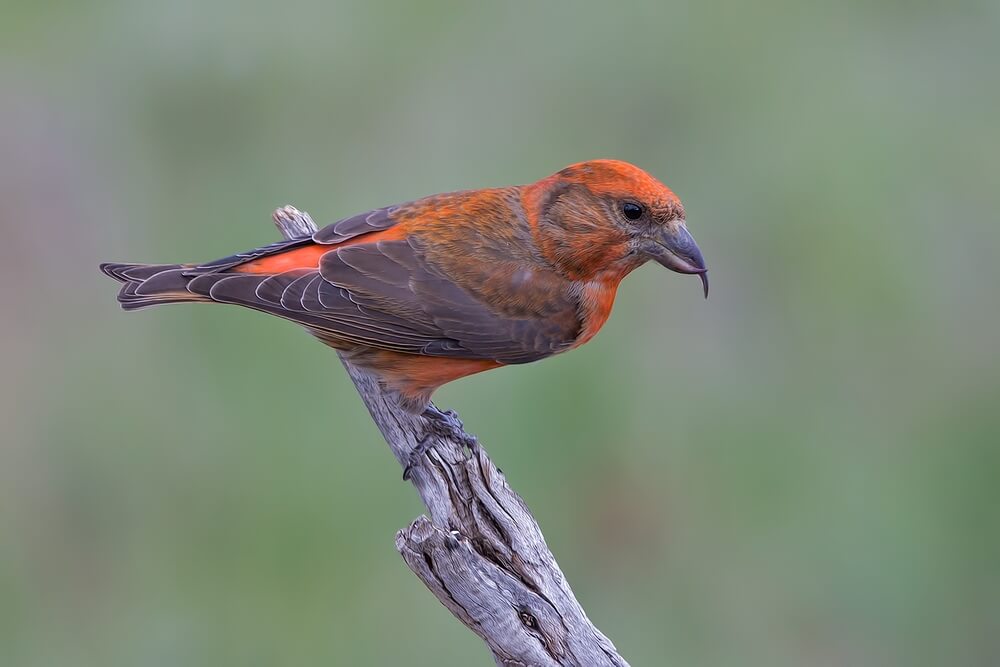Singing in the Snow
by Wenfei Tong
Broadcast 3.2017 and 3.1 & 3.4.2023

Listen:
If you go cross-country skiing in the North American woods, you’re likely to hear all manner of twittering and chattering as flocks of birds like chickadees, finches, and nuthatches bustle about finding food and warning each other about danger. Most birds will call like this at any time of year, but reserve singing for signaling a territory or attracting mates during the breeding season, typically in spring.
So imagine how surprising and lovely it is when the snow-damped stillness is broken by something more melodic than “chickadee-dee-dee” alarm calls signaling your approach.
A sweet, jumbling, liquid song can sometimes come floating down from the top of a snow-covered conifer or some other prominent perch. If you looked up, you would see that, unlike most of the songbirds that remain to brave the Montana winters, the aptly-named Townsend’s solitaires don’t flock. Rather, both males and females sing all winter long from their solitary perches to broadcast their ownership of a juniper patch. In the winter, solitaires rely almost exclusively on juniper berries, and individuals with more berry-rich territories are more likely to survive than those guarding fewer berries. Because the stakes are so high, battles over juniper territories can be decidedly violent, so the beautiful song of a solitaire in the snow belies the darker side of nature in winter.
Another exception to the “no singing in winter” rule is the red crossbill. In this case, the underlying reason for singing is less violent, but also comes down to being an extreme food specialist. Crossbills are named for their bills, which literally cross at the tips as an adaptation for extracting seeds from pinecones. Indeed, crossbills are such food specialists that they even feed their young on pine seeds, in contrast to the insect-based baby food most seed-eating birds rely on. This specialised bill ensures crossbills a near-monopoly on conifer seeds, and frees them to breed whenever there is a good cone crop, often in the depths of winter. So a staccato series of chips and whistles in winter constitutes the male red crossbill’s serenade.
It turns out that there may be at least eight distinct red crossbill races or incipient species just in North America alone, and even more if one looks across northern Europe and Asia. Each race has a distinct call and a distinct bill size and shape specialised for a particular conifer. For instance, Douglas-fir specialists and lodgepole pine specialists would seldom interbreed, just because differences in their bill size and shape also result in their making different sounds, keeping the races apart. So if you do come across a flock of red crossbills, it’s worth listening closely.
And isn’t it nice to know that even in winter, there are some melodic bird songs to listen for?
Every week since 1991, Field Notes has inquired about Montana’s natural history. Field Notes are written by naturalists, students, and listeners about the puzzle-tree bark, eagle talons, woolly aphids, and giant puffballs of Western, Central and Southwestern Montana and aired weekly on Montana Public Radio.
Click here to read and listen to more Field Notes. Field Notes is available as a podcast! Subscribe on Apple Podcasts or wherever you listen to podcasts.
Interested in writing a Field Note? Contact Allison De Jong, Field Notes editor, at adejong [at] montananaturalist [dot] org or 406.327.0405.
Want to learn more about our programs as well as fun natural history facts and seasonal phenology? Sign up for our e-newsletter! You can also become a member and get discounts on our programs as well as free reciprocal admission to 300+ science centers in North America!












